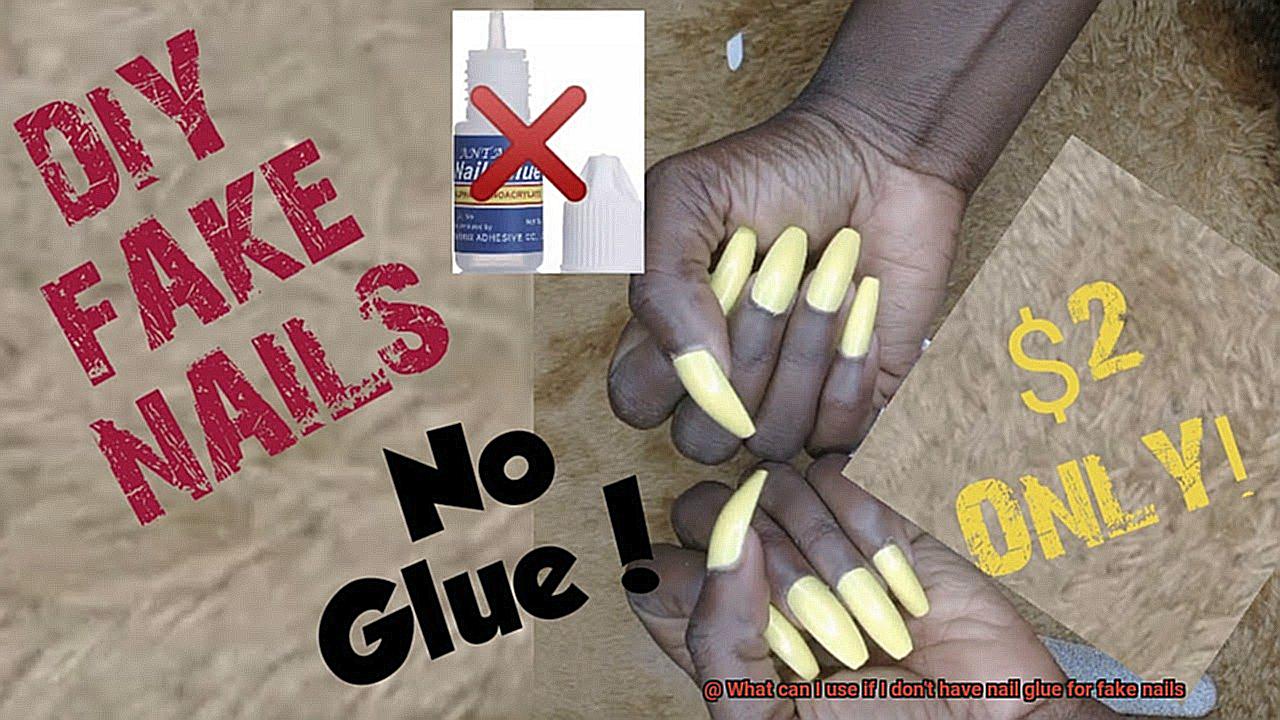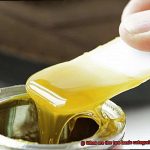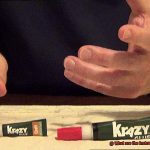Welcome to our blog, where we dive into the captivating world of resin statue repair.
If you’re here, chances are you have a treasured resin statue that’s seen better days. But fret not.
We’ve got your back. In this post, we’ll be sharing some priceless tips and techniques to help you revive your beloved resin statue and bring it back to its former glory.
So, let’s roll up our sleeves and embark on this thrilling resin restoration adventure together.
What is a Resin Statue?
Contents
- 1 What is a Resin Statue?
- 2 What Materials are Used to Make Resin Statues?
- 3 What Are the Advantages of Using Epoxy Resin Adhesive for Repairing Resin Statues?
- 4 How to Prepare the Surface Before Applying Epoxy Resin Adhesive
- 5 Steps for Applying Epoxy Resin Adhesive to Repair a Resin Statue
- 6 Alternatives to Epoxy Resin Adhesive for Repairing a Resin Statue
- 7 Cyanoacrylate Glue (Super Glue) as an Alternative for Repairing a Resin Statue
- 8 Polyester Resin as an Alternative for Repairing a Resin Statue
- 9 Conclusion
Resin statues have become a popular choice for individuals seeking to add aesthetic appeal and charm to their living spaces. These decorative pieces are visually appealing, durable, and versatile. In this blog post, we will explore the world of resin statues, from their creation process to their maintenance and repair.
The Creation Process:
- Resin statues are crafted using a mixture of liquid resin and a hardener.
- The combination of these components creates a chemical reaction that results in a solid and durable material known as resin.
- The liquid resin is poured into a mold made from materials such as silicone or rubber.
- Once the resin has hardened, it is removed from the mold, revealing a replica of the original design.
- This process allows for intricate details and realistic features to be captured in the final product.
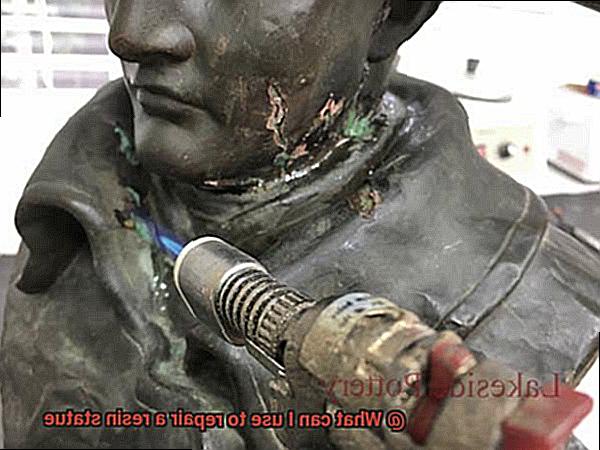
Versatility and Durability:
- Resin statues can be easily molded into various shapes and designs, allowing for intricate detailing and lifelike representations.
- Resin statues can be painted with different colors and finishes to enhance their appearance.
- Resin is strong and sturdy, making it resistant to breakage or damage.
- This durability makes resin statues suitable for both indoor and outdoor use, as they can withstand exposure to the elements.
Maintenance Tips:
- Resin statues can be cleaned with mild soap and water.
- Dust or dirt can be wiped away with a soft cloth.
- Harsh chemicals or abrasive cleaners should be avoided as they may damage the surface of the statue.
Repairing Resin Statues:
- Epoxy resin adhesive is commonly used for repairing cracks or breakages in resin statues.
- This adhesive forms a strong bond, ensuring the repaired statue retains its original beauty.
- Before applying the adhesive, it is important to clean the surface of the statue thoroughly and follow the manufacturer’s instructions for proper application and curing.
What Materials are Used to Make Resin Statues?
Resin statues, those captivating works of art that grace our shelves, are crafted from a mesmerizing material known as resin. This versatile substance, a synthetic polymer, possesses the magical ability to be molded and shaped into a myriad of forms.
However, the main ingredients in the creation of resin statues are epoxy and polyurethane resins, each with their own remarkable properties.
Imagine if you will, the mighty epoxy resin, a superhero of the adhesive realm. Comprised of two components – a resin and a hardener – this dynamic duo undergoes a chemical reaction that transforms the mixture into a solid form. With its exceptional adhesive properties, formidable strength, and resistance to water and chemicals, epoxy resin stands tall as the Hulk among resins.
But hold on tight, for there is another hero in our tale – polyurethane resin. This captivating character is forged through the union of diisocyanates and polyols. Its unique formulation allows for flexibility, hardness, and resilience against wear and tear. When strength and endurance are paramount, polyurethane resin emerges as the champion.
Yet, our story does not end here. In addition to epoxy and polyurethane resins, other materials play vital supporting roles in the creation of resin statues. Fillers like fiberglass, calcium carbonate, and talc join forces to enhance stability and fortify strength.
Pigments add vibrant hues to these masterpieces, offering a kaleidoscope of colors to choose from. And let us not forget about the additives – UV stabilizers protect against fading under the sun’s relentless gaze, flame retardants bestow fire resistance, and anti-foaming agents ward off troublesome bubbles during the curing process.
What Are the Advantages of Using Epoxy Resin Adhesive for Repairing Resin Statues?
Resin statues are exquisite works of art that demand our utmost care. But accidents happen, and when they do, epoxy resin adhesive is the hero that comes to the rescue. In this article, we will explore the advantages of using epoxy resin adhesive for repairing your cherished resin statues.
Advantage 1: Unbreakable Bonds
Epoxy resin adhesive possesses unparalleled bonding capabilities, creating robust and enduring connections between broken pieces. Once cured, it forms a bond that defies time, ensuring your repaired statue remains intact for years to come.
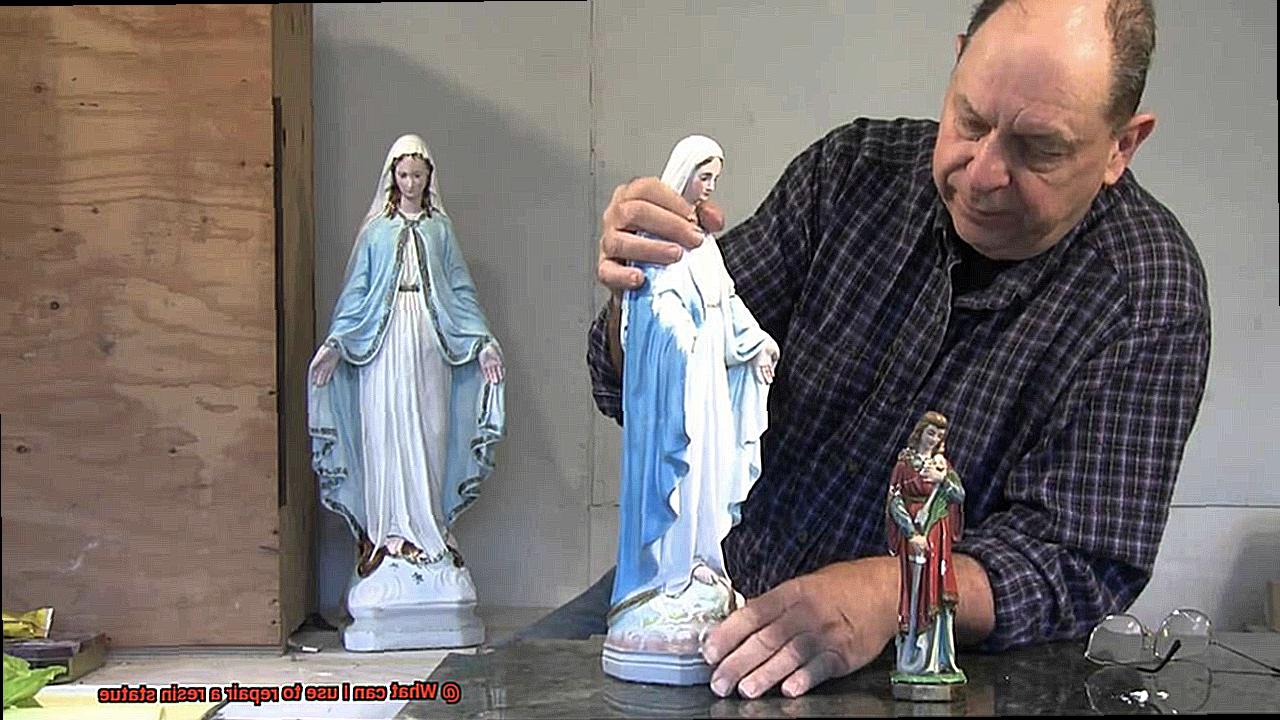
Advantage 2: Universal Compatibility
What sets epoxy resin adhesive apart is its ability to adhere to various materials, including resin. This superhero-like quality allows you to repair different types of resin statues, regardless of their composition or surface finish.
Advantage 3: Seamless Repairs
Cracks and missing pieces can be a nightmare for resin statue owners. But fear not. Epoxy resin adhesive comes to the rescue with its exceptional gap-filling properties. It seamlessly fills in gaps, delivering flawless repairs that make your statue look as good as new.
Advantage 4: Versatile Savior
Whether it’s a minor repair or a major structural issue, epoxy resin adhesive has got your back. Its versatility enables it to handle repairs of all sizes and complexities. No matter how extensive the damage may be, epoxy resin adhesive can resurrect your beloved statue.
Advantage 5: Defying the Elements
Outdoor resin statues or those exposed to harsh environments need an adhesive that can stand up against moisture and chemicals. Epoxy resin adhesive offers resistance to both, providing a protective barrier that shields against water damage and deterioration. With epoxy resin adhesive, your repaired statue can brave the elements with confidence.
Advantage 6: Stability Guaranteed
Epoxy resin adhesive cures into a strong and rigid finish, ensuring stability in the repaired area. Say goodbye to worries about your statue losing its shape or structure over time. With epoxy resin adhesive, your repair is solid and long-lasting.
Advantage 7: Easy Application
Repairing your resin statue doesn’t have to be daunting. Epoxy resin adhesive simplifies the process with its user-friendly application. Just mix the resin and hardener, apply within the recommended working time, and voila. You have ample time for precise positioning before the adhesive starts to cure.
Advantage 8: The Multitasker
Sometimes, repairing a resin statue may involve different materials, such as metal or wood. Fear not, for epoxy resin adhesive boasts excellent adhesion properties to various materials, making it the perfect sidekick for multi-material repairs.
How to Prepare the Surface Before Applying Epoxy Resin Adhesive
Repairing a resin statue requires careful surface preparation to ensure a strong and durable bond. By following these steps, you can effectively prepare the surface before applying epoxy resin adhesive, resulting in a flawless repair.
Clean the Surface:
Begin by thoroughly cleaning the surface of the resin statue. Use a soft brush or cloth to remove any loose particles, dust, or dirt. Stubborn stains or sticky residue can be gently scrubbed with a mild detergent and water solution. Rinse the surface with clean water and allow it to dry completely. A clean surface is essential for proper adhesion.
Roughen the Surface:
To enhance adhesion, lightly sand the repair area using fine-grit sandpaper. Sand in circular motions with light pressure, creating a slightly rough texture on the surface. This roughened surface provides a better grip for the epoxy resin adhesive, ensuring a strong bond.
Remove Dust:
After sanding, it is crucial to remove any dust generated from the process. Use a clean, dry cloth or compressed air to blow away loose particles. It’s important to have a clean and debris-free surface for optimal adhesion.
Apply Primer or Adhesion Promoter:
For resin statues with glossy or smooth finishes, applying a primer or adhesion promoter is recommended. These products help create a stronger bond between the adhesive and resin surface. Follow the manufacturer’s instructions for even coverage and allow sufficient drying time before proceeding.
Test Fit the Pieces:
Before applying the adhesive, test fit the broken pieces together without any glue. This step ensures proper alignment and serves as a visual reference for the repair. Adjust as necessary to achieve an accurate fit, providing a seamless restoration.
Apply Epoxy Resin Adhesive:
Once satisfied with the fit, apply a thin layer of epoxy resin adhesive to both surfaces that will be bonded together. Use a small brush or applicator to spread the adhesive evenly. Align and press the broken pieces together firmly, ensuring good contact between the surfaces. Wipe away any excess adhesive and let it cure according to the manufacturer’s instructions.
Steps for Applying Epoxy Resin Adhesive to Repair a Resin Statue
Repairing a resin statue with epoxy resin adhesive requires a series of steps to ensure a successful and durable repair. Here are the key steps to follow:
- Clean the statue: Begin by cleaning the damaged area of the statue with a mild detergent and warm water. Rinse it thoroughly and allow it to dry completely before proceeding.
- Roughen the surfaces: Use sandpaper or a file to roughen the damaged area and the corresponding piece that needs repair. This will create a better bonding surface for the epoxy resin adhesive.
- Mix the adhesive: Follow the manufacturer’s instructions to mix the epoxy resin adhesive. Most epoxy resins come in two parts – a resin and a hardener. Combine equal amounts of each part on a disposable mixing surface, using a stirring stick to thoroughly mix them together.
- Apply the adhesive: Apply a thin layer of epoxy resin adhesive to both the damaged area of the statue and the corresponding piece that needs repair. Use a small brush or spatula to spread the adhesive evenly, ensuring all areas are covered.
- Press the pieces together: Gently press the two pieces together, aligning them as accurately as possible. Hold them in place for a few minutes to allow the adhesive to start bonding.
- Secure larger repairs: If necessary, use clamps or other methods to hold the pieces together while the epoxy resin adhesive cures. Refer to the manufacturer’s instructions for recommended curing times.
- Smooth out rough edges: Once the adhesive has fully cured, use sandpaper or a file to smooth out any rough edges or excess adhesive. Be careful not to damage or scratch the statue during this process.
- Enhance appearance (optional): Consider painting the repaired area or applying a clear sealant to enhance its appearance. Choose products specifically designed for use on resin surfaces.
Alternatives to Epoxy Resin Adhesive for Repairing a Resin Statue
After conducting thorough research, I am delighted to share some fantastic options with you.
First on our list is cyanoacrylate glue, also known as super glue. Renowned for its rapid drying and robust bonding properties, this adhesive works like magic on resin surfaces and provides a dependable bond. However, it is essential to note that it may not be as durable as epoxy resin and could be less resistant to extreme temperatures or excessive handling.
Next up is polyurethane adhesive, a flexible and versatile choice. This adhesive excels in bonding different materials, including resin, and can withstand moderate stress and movement. Its water-resistant properties make it ideal for outdoor resin statues that may encounter moisture.
If you have minor damages or smaller repairs, consider utilizing a two-part epoxy putty. This sculpting clay-like substance hardens into a formidable bond when the resin and hardener are mixed. Shape it to fit the damaged area, allow it to work its magic, and once cured, you can sand, paint, or even drill it if necessary. Talk about versatility.
Last but certainly not least are silicone-based adhesives. Celebrated for their flexibility and waterproof properties, these adhesives create a strong bond on resin surfaces. Ensure you choose one compatible with your specific type of resin.
When selecting an alternative adhesive for your resin statue repair project, factors such as damage size and nature, desired durability, and intended use of the statue should be considered. Always follow the manufacturer’s instructions and perform a small test beforehand.
Cyanoacrylate Glue (Super Glue) as an Alternative for Repairing a Resin Statue
If you find yourself in a predicament with a cracked or broken resin statue, fear not. I have a solution that will leave your statue looking good as new – cyanoacrylate glue, also known as Super Glue. This adhesive marvel is like a superhero for resin repairs, offering a quick fix with a bond that’s as strong as steel. But before you embark on your repair journey, let’s go through some steps and precautions to ensure a successful outcome.
- Step 1: Clean the surfaces that need bonding. Wipe away any dirt or debris using a soft cloth or brush. Think of it as preparing a canvas for your glue masterpiece.
- Step 2: Apply a small amount of cyanoacrylate glue to one of the surfaces. Remember, less is more. You don’t want to drown your poor statue in glue. Thin layers are the key here.
- Step 3: Press the surfaces together and hold them firmly for a few seconds. The glue works its magic quickly, but holding them together ensures a secure bond. Trust me, your statue will be grateful.
- Step 4: Let it dry completely before handling. Patience is a virtue, my friends. Give it approximately 24 hours to dry and set properly. You don’t want to undo all your hard work by being too hasty.
Now, onto some precautions. Remember that cyanoacrylate glue can be brittle once dried, so handle your repaired statue with care. Avoid placing it in areas where it might face rough handling or pressure.
Oh, and if you accidentally spill some glue on the surface of your statue (we’ve all been there), grab some acetone or nail polish remover and remove it immediately. Just be sure to test them on a small, inconspicuous area first to avoid any unwanted damage or discoloration.
Polyester Resin as an Alternative for Repairing a Resin Statue
Fear not, for I have the solution that will transform your cracked or broken masterpiece into a magnificent work of art once again. Introducing polyester resin, the superhero of adhesives.
Polyester resin is a synthetic material known for its exceptional adhesive properties and durability. When combined with a catalyst, it undergoes a powerful chemical reaction that hardens it into a strong and durable substance. This remarkable adhesive is widely used for repairing resin statues due to its ability to seamlessly fill in gaps and cracks.
One of the greatest benefits of using polyester resin for repairing resin statues is its capacity to provide a flawless repair. Unlike other adhesives like super glue or epoxy, polyester resin can be used to fill in gaps and cracks in the statue, creating a smooth surface that is virtually indistinguishable from the original material. This is particularly crucial when dealing with intricate or detailed statues, as it allows for a more aesthetically pleasing repair.
Polyester resin not only offers a seamless finish; it also boasts exceptional strength and durability. Once cured, it forms a rigid and stable bond that can withstand external pressures and movements without breaking or cracking. This means that your repaired statue will not only look great but will also stand the test of time.
Now, let’s delve into the process of using polyester resin to repair your beloved statue. First, you need to thoroughly clean the damaged area, removing any dust, dirt, or loose fragments to ensure proper adhesion of the resin. Once cleaned, mix the polyester resin with a catalyst according to the manufacturer’s instructions.
Next, apply the mixed resin to the damaged area using a small brush or spatula. Be sure to apply an even layer of resin and fill in any gaps or cracks completely. If you accidentally apply too much resin, don’t panic. Simply wipe away the excess with a damp cloth before it cures.
Now comes the hard part – patiently waiting for the polyester resin to cure. The curing time will vary depending on the specific product used, but typically ranges from a few hours to a day. It’s crucial to allow the resin to cure fully before handling the repaired statue to ensure that the bond has formed properly.
Once the polyester resin has cured, it’s time to sand and polish the repaired area to match the surrounding surface of the statue. Use fine-grit sandpaper or a polishing compound to smooth out any imperfections and restore the original finish. With proper care and maintenance, your resin statue repaired with polyester resin can maintain its appearance and structural integrity for many years to come.
R8My9ZrsfPU” >
Conclusion
When it comes to repairing a resin statue, there are several options available to you. One popular choice is using epoxy resin adhesive, which is specifically designed for bonding and repairing resin materials. This adhesive creates a strong and durable bond that can withstand the test of time.
Another option is using a two-part epoxy putty, which allows you to mold and shape the putty to fill in any cracks or missing parts of the statue. Once it hardens, it becomes incredibly strong and can be sanded and painted to match the original color of the statue.
If you prefer a more flexible solution, you can try using cyanoacrylate glue, also known as super glue. This type of adhesive bonds quickly and securely, making it ideal for small repairs on resin statues.
For larger repairs or structural issues, you may want to consider using fiberglass cloth and resin. This combination creates a strong reinforcement that can restore stability to your statue.
Regardless of the method you choose, it’s important to clean the surface of the statue thoroughly before applying any adhesive or filler. This will ensure proper adhesion and a seamless repair.
In conclusion, there are various options available for repairing a resin statue. Whether you opt for epoxy adhesive, epoxy putty, cyanoacrylate glue, or fiberglass cloth and resin, each method offers its own benefits depending on the extent of damage and your personal preferences.

